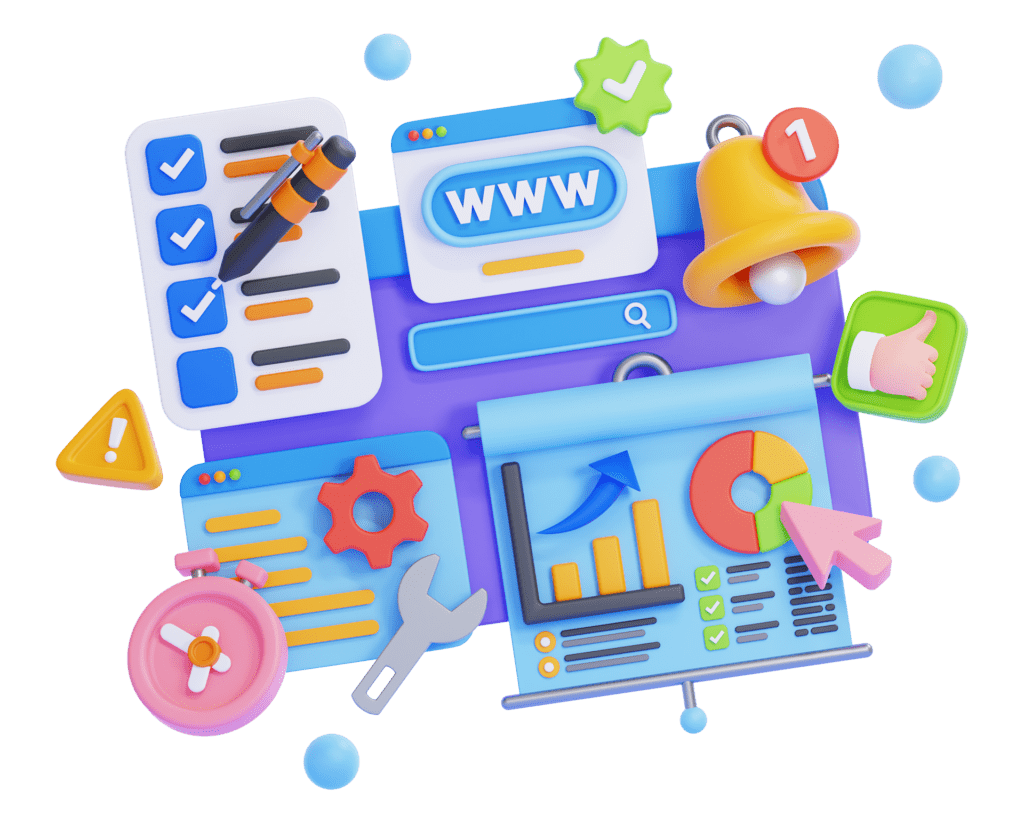SEO is changing. The explosion of AI-generated content across the internet has led to websites covered in articles, guides and information to 'help' users, all scattered with keywords to 'help' search engines.
But it's not all helpful content. Instead a lot of it is thin, brief and - in many cases - wrong.
Search engines like Google don’t want to be caught sharing this to their users. They want to provide the best user experience possible - leaving users misinformed, misled or making mistakes is the opposite of this. If you can’t convince users that your website offers a better experience than that, you’re going to rank below all those who can.
But how do you convince Google your website is offering high-quality, helpful content? That your business gives customers an excellent experience - one worth sharing?
E-E-A-T
E-E-A-T is more than just another digital marketing acronym. It is rapidly becoming the backbone of search engine optimisation and one of the most important factors search engines consider when they evaluate your website.
As a team of SEO experts, we’re here to guide you through the tangle of search engine optimisation - and in this post we’ll shed some light on the subject of E-E-A-T.
We’ll cover exactly what it is, what benefits it brings, and how to optimise your website for it. We’ll also explore how its role in SEO might change across the future.
E-E-A-T stands for Experience, Expertise, Authoritativeness and Trustworthiness. It is a set of guidelines that Google uses to help evaluate content quality in order to choose which websites to feature in their search engine rankings.
Originally, it was E-A-T. In 2022 Google added an extra E (Experience) as they realised this is a strong indicator of helpful content. If you're claiming to have expertise and authority on something, you should also have extensive first hand experience of it.
Previously, E-E-A-T was mainly relevant around Your Money or Your Life (YMYL) subjects. YMYL sites cover topics such as financial matters or health information - things that can have severe repercussions if bad advice is acted on. E-E-A-T was introduced to help Google share only safe and reliable information.
Over time, the scope of E-E-A-T has increased. Necessarily so. As we'll explore throughout this article, it now touches on almost all businesses who want to see search success.
The acronym is an easy way of remembering an ethos that should underpin your website. Here is what it means precisely:

The content creator has first-hand experience and knowledge on the subject.

The content creator has in-depth knowledge or skills on the subject and related fields.

The website or content creator is an established and respected source on this subject.

The accuracy, honesty and reliability of the content can be trusted.
E-E-A-T is not a direct ranking factor for your place in the search results. However, Google has stated that its algorithms give added weight to content that can be identified as having strong E-E-A-T signals.
It is also a fundamental part of their search quality rater guidelines.
Ultimately, E-E-A-T is a fantastic way to show search engines AND potential customers that your business is trustworthy and worth investing in. It's a no lose inclusion for your website.

Despite not being a ranking factor, E-E-A-T is now a cornerstone of SEO - and that isn't the only benefit it has. Here are some more positives you can enjoy when you optimise for E-E-A-T:

In 2025, E-E-A-T is not only still important, it's more important than ever. Increasing amounts of AI generated content has left great swathes of the internet stuffed with web pages that seem to say a lot but are actually full of misleading, conflicting and false information.
Google doesn't want to showcase these pages in their search results at risk of driving away users. E-E-A-T is one of the few reliable tools that search engines have left to assess content quality en masse.
Especially because it’s not purely measured by algorithms and automated assessments - establishing E-E-A-T effectively is even more important because it is actually judged by their human quality raters.
Google employs around 16,000 people to support them in ranking websites. These quality raters carry out a range of tasks that represent real world use of the search engine, then assess the results against a set of guidelines to determine their quality.
One of the factors they assess is E-E-A-T. In fact, they are specifically trained on how to assess E-E-A-T because it is so important.
The search quality guidelines are regularly updated to make sure they deliver the best results. In 2025, the updates focused on identifying unhelpful AI content in order to eliminate it from search. And a lot of this relates to E-E-A-T signals.
These updates also asked raters to look out for attempts to fake E-E-A-T. Inflated or faked credentials can now warrant a Low rating, and raters are instructed to pay attention to what the content of sites says and in-depth off-site research, instead of any quick claims.
This means optimising for E-E-A-T is not only important, it has to be done the right way. But what is that exactly?
Unfortunately, establishing E-E-A-T is not a case of throwing up an extra page to prove your pedigree. It has to be woven throughout your entire SEO strategy - in fact your entire website. More fortunately, this means there are plenty of ways to do it.
One of the easiest aspects to establish is experience. Featuring verified customer reviews (with photos) and adding detailed descriptions of product trials with documented outcomes are fantastic ways of showing real world experience - though you do need to rely on your customer to create content.
A perfect example is for a restaurant. A review featuring customer feedback, unique photos of the restaurant, their food and the customer enjoying themself is pretty irrefutable proof that they have firsthand experience of visiting your business.
Demonstrating expertise is similarly simple in theory, though it takes effort putting into practice. You need to make sure your website has informative, relevant, unique and reliable content - similar to that considered 'helpful content' by Google's algorithms. Sharing valuable resources like histories, informative articles and how-to content all show deep knowledge of the subject. Especially if they're peppered with unique insights that can only come from experience (hitting the 'experience' criteria too).
The most straightforward way to establish authority is by earning backlinks to your website from other authoritative websites. Of course, the difficult part is securing those links. Your industry, your products or services, your business size and the resources you have available will impact how you do that - and if it's even possible.
However, creating unique, well-researched content packed full of expert insights will always help with this. And if you can conduct your own research to share, that’s even better.
Press coverage, citations and guest contributions on high authority sites in your niche or industry will also help boost your authority. As will mentions from industry leaders or trusted publications.
Getting these links and mentions isn't always easy, but they can be actively sought with outreach and digital PR.
Finally, we come to trust. Google themselves state this is the most important part of E-E-A-T because "untrustworthy pages have low E-E-A-T no matter how Experienced, Expert, or Authoritative they may seem."
This trust can be built through a range of technical and on page signals. Providing easy to find contact information, for example, which proves users can quickly and easily get in touch if needed. Similarly, clear disclosures and ethical business practices also show transparency.
The content of your website can also be used to establish trust. Well-researched, accurate and relevant content with citations from other authoritative websites will show that you aren't just knowledgeable about your area - it will show that you've critically evaluated what you know too. That you can be trusted.
Finally, making sure your website is secure sends strong trust signals. Using HTTPS and SSL encryptions are essential for secure websites, but you should pay attention to every plug-in and update you make to ensure it supports your site and doesn't create a vulnerability.

We have to be honest, E-E-A-T is not a particularly easy thing to measure. There is no specific 'rating' you can track, or one clear signal that demonstrates how well you've established it. And because it's so complex, there aren't even third party tools you can rely on to assess it or monitor it.
Two things that will indicate how well you've established E-E-A-T are your position in the search results and how much organic search traffic you get. Of course, neither of these can be considered in isolation as they are signals of an effective SEO strategy overall too, but they are certainly signifiers.
Engagement metrics can be useful when trying to judge your E-E-A-T. As E-E-A-T is about how users experience your site, an increase in the following will show you're creating a positive user experience.
Time on page
How long a user spends reading your content can be a sign of how interested they are in what it says - and also how useful it is. The more helpful it is, the more likely they are to read the whole page.
It is worth noting that content may take visitors a long time to read if it's difficult to read or digest. However, if your content is seriously overwritten or complicated, visitors are likely to just leave your site to find an easier to understand one. To avoid confusing these signals, it's important to consider how long your content 'should' take to read, as well as the engagement rate.
Engagement rates
If visitors to your website move on to other pages, this is another sign of strong content quality. Conversely, if they leave after reading just one page - or worse, barely reading it at all - then this shows your content is of no use to them.
Alternatively, it could mean that they've found the piece of information they needed but haven't felt compelled to explore your site further. Either way, you're losing potential conversions and signals are being sent to Google that your site isn't satisfying queries.
Conversion rates
If a strong percentage of site users are completing intended actions (submitting a form, signing up for newsletters or making a purchase, for example), it's a good sign they're having a positive user experience. It suggests you're delivering useful, authoritative content in an accessible, helpful way and people are in turn considering your website authoritative and trustworthy enough to purchase from. A testament to your E-E-A-T.
No tools are able to accurately measure E-E-A-T. However, a combination of different tools can help give you a picture of how your website performs in that area.

To get an idea of how your website is performing with any aspect of SEO, your starting point should always be these free Google tools. Use Search Console to track your visibility through impressions and clicks, while GA4 reports can show your conversion rates and engagement rates.

Moz Domain Authority
SEO software specialists Moz have created their own ranking score (Domain Authority) that estimates how likely your website is to rank in searches. While it uses an independent algorithm, they base the score on the estimated backlink quality. And this is also an indicator of E-E-A-T. There are several ways to check your Moz domain authority, though the Moz Chrome extension is the most convenient free version.

Other Industry Tools
Most subscription SEO tools will be able to help you track your E-E-A-T in different ways. One helpful tool is SEMRush as its keyword tracker allows you to monitor your appearance in Google's search features such as People Also Ask and AI Overviews. Though it isn't proven, both these features seem to favour high authority websites with high quality content - two cornerstones of E-E-A-T.
At this point, you won't be surprised to hear that E-E-A-T is a continuous investment. Even if you've earned a mountain of high quality backlinks and built yourself a strong online presence with plenty of content created with expertise, authoritativeness and trustworthiness in mind, your work is not finished.
Your E-E-A-T needs to be monitored and regularly reviewed. You need to identify weaknesses and address them.
You also need to continue to publish valuable content that meets Google's guidelines - and change outdated content so it always has the most current information.
Today, E-E-A-T is more important than it's ever been before - and that is just going to increase in the future. Google has shown that E-E-A-T is a big consideration when it comes to inclusion in AI overviews, as they use it as a sign of relevant, reliable content to show users.
Brand will continue to play a part, and well-researched, cited and useful content is likely to become an even more important tool in the fight for organic visibility. It is also a transferrable one, that is likely to please search engines beyond Google if search behaviour starts to shift.
If you want to futureproof your search performance, with a website optimised in line with constantly changing users and search engines, our team of expert SEO consultants can help. They know to send the right signals to get your website seen across platforms and trusted by your users. Talk to us today to find out how.
Susan Giles is a skilled SEO copywriter and creative content writer with a passion for storytelling and a talent for turning complex ideas into engaging, accessible content.
With a background in freelance writing and creative writing tutoring, she brings both technical know-how and a love of language to everything she creates. Whether polishing existing copy or crafting fresh, optimised content from scratch, Susan knows how to make words work harder. Outside of writing, she’s usually buried in a good book.
Sign up to The Digital Maze Newsletter